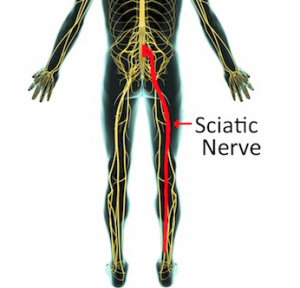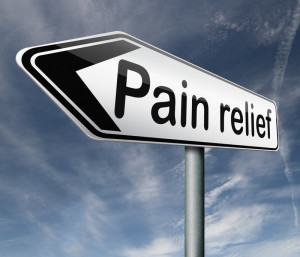For over 60 years, epidural steroid injections have been a mainstay in effective pain management treatment for disc herniation and sciatica in the lumbar spine. Overall, there are three popular methods of performing epidural injections, with the caudal variety of  being recognized as the easiest to perform.
being recognized as the easiest to perform.
The caudal type of epidural involves placing a larger volume of numbing medicine and steroid through the lowest part of the spine, through an opening known as the sacral hiatus.
For certain conditions, caudal epidurals represent the most effective method of pain management, and there are plenty of studies showing that caudal epidurals are equivalent in effectiveness to the other two varieties for disc herniations and sciatica. For those who have sustained an injury at work with sciatica or an exacerbation of spinal stenosis, then a caudal with an Arizona workers comp pain doctor may be very effective.
These injections are performed as an outpatient in a procedure room or in ambulatory surgery center. Patients are placed on their belly on a well padded table that allows x-rays to go through it. Most modern pain management doctors use fluoroscopy for caudal injections, which is a real-time form of x-ray. Using fluoroscopy permits an increased level of needle placement accuracy.
As mentioned, the needle is inserted at the lowest part of the spine with appropriate sterilization and numbing of the skin and underlying soft tissues. Once the sacral hiatus is reached, contrast medicine is injected to ensure accurate placement. Once that is verified, numbing medicine along with cortisone is injected in a larger amount than for the other types of epidural injections.
Why is a larger amount injected? The answer is that caudal epidurals are able to reach numerous levels of the spine as the medicine will gravitate through the epidural space after it is placed.
This makes it an effective treatment for the condition such a spinal stenosis, which involves typically multiple nerve roots being pinched at various spinal levels. In addition, caudal injections allow treatment for post surgical pain even when hardware is in position. For those dealing with a workers compensation injury, the injection may permit the patient to receive an injection from a Phoenix injury doctor and return to work.

An exacerbation of spinal stenosis often responds well to caudal epidurals.
Neither of the other two varieties of epidural injections work well for multilevel treatment or post surgery pain. Granted, the pain doctor can simply do multiple injections, but cannot reach multiple levels with one injection as with a caudle.
Over 100 studies have been performed looking at the effectiveness of caudal epidural injections. Multiple have shown that they work extremely well for symptoms of disc herniation and sciatica in the lumbar spine (Pain Physician 2012). They work well for short-term and long-term, with results being seen over one year in several studies. It may take a series of caudal epidural injections performed every few months to obtain continued relief.
There are some positive results for spinal stenosis along with continued low back pain after lumbar surgery. This is often called failed back surgery syndrome and a caudal epidural can help with both of these conditions very well.
The results have not been as impressive for axial low back pain due to degenerate disc disease and facet arthritis, but a couple studies have shown fair results for this use.
 Complications of caudal epidural steroid injections are very low. They include a low risk of infection, bleeding, nerve injury and possible allergic reaction to the medication used. Also, the steroid medicine can cause transient increases in blood sugar along with some weight gain and water retention. These usually resolve within a few days.
Complications of caudal epidural steroid injections are very low. They include a low risk of infection, bleeding, nerve injury and possible allergic reaction to the medication used. Also, the steroid medicine can cause transient increases in blood sugar along with some weight gain and water retention. These usually resolve within a few days.
Overall, caudal epidural injections have benefits that far outweigh the risks. They have been shown to work very well for the symptoms of sciatica and disc herniations where a nerve is being pinched. In addition, they have shown satisfactory results for spinal stenosis where multiple levels need to be treated, and failed back surgery syndrome where instrumentation is in place.
It is very difficult for the other types of epidural injections to reach the areas of pain when this is the situation, and also caudal epidurals have been shown to have the medication reach the front part of the spinal canal as well.
If you or a loved one is experiencing significant back pain after surgery or symptoms of nerve root compression such as from a disc herniation or spinal stenosis, caudal epidural injections may be the answer to short and long-term pain relief.






Leave A Comment